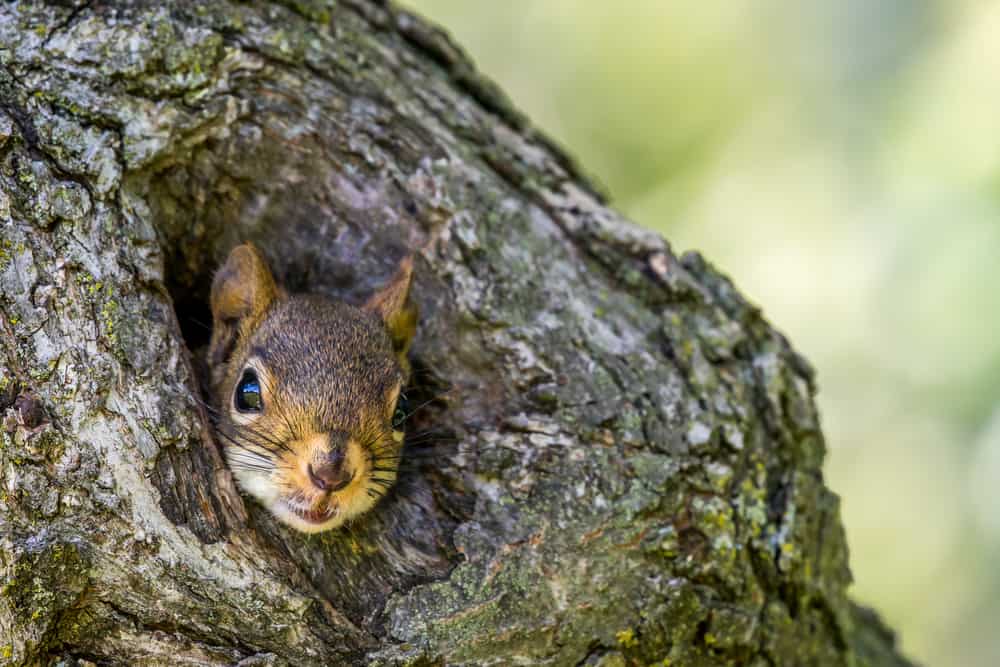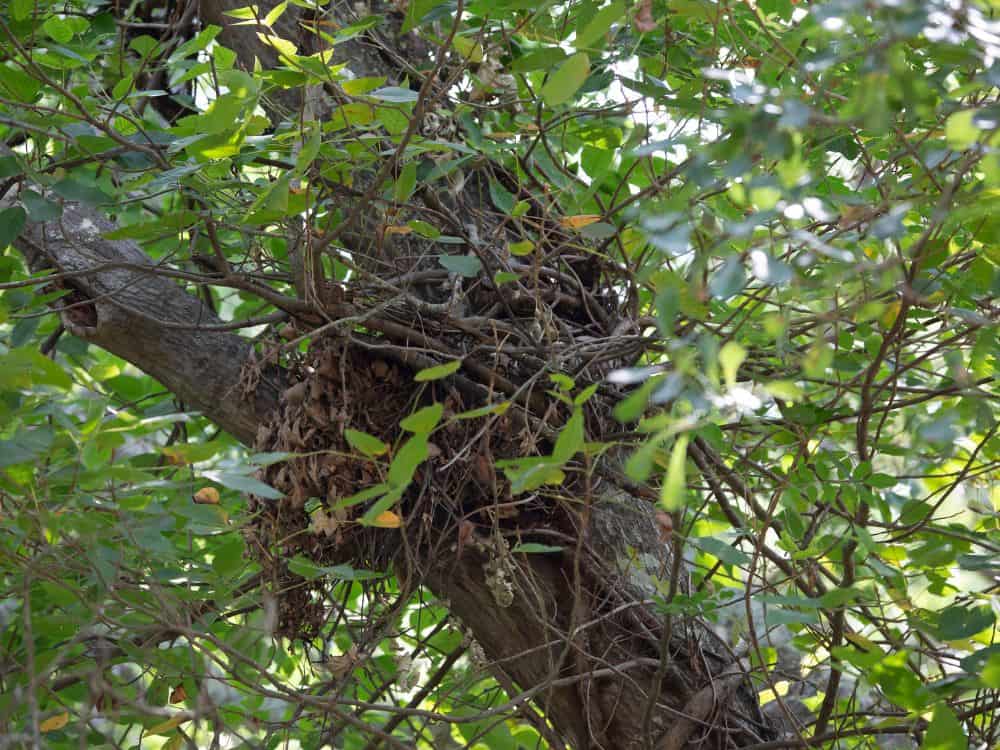Without the right information, it can be difficult to distinguish squirrel nests from bird nests. Whether you’re simply curious or you need to know what you’re removing from your tree, there are a few characteristics to look for.
Squirrel nests are usually hollow spheres, and they look more like a ball of leaves than they do a basin-like nest. Squirrels are also more likely to build their nests in dens inside of trees, although they will settle for one in the branches, inside your house, or burrowed in the ground when needed.
This article explains what the typical nest looks like before diverging into the different types of nests you may run into. We also discuss how and when these nests are built, how they’re used, and what you can do if you find squirrel nests in your yard.
Key Characteristics of Squirrel Nests
Regardless of where the squirrel nest is, it usually:
- Involves a hollow sphere to provide complete protection
- Has two holes for entry and exit
- Is at least 1 foot wide to provide enough room for the squirrel family
These nests have a hard outer layer of twigs and branches to protect squirrels from elements such as wind and rain, while they pad and insulate the inside with softer moss and leaves.
These characteristics show up in different ways depending on the type of nest you are dealing with, and each species gravitates towards different types of nests.
Types of Squirrel Nests
The types of squirrel nests you come across are distinguished by where they are located.
- Dreys refer to squirrel nests built in the branches of trees.
- Dens, also known as tree cavity nests, use existing tree holes to provide protection.
- Indoor dens take advantage of human-made structures such as houses or sheds.
- Burrow systems are dug into the ground.
Depending on the environment, the species of squirrel, and what is available, you may see any of these in your area. Dens are the most common because they offer the most protection, and burrow systems are usually reserved for ground squirrels.
Dreys
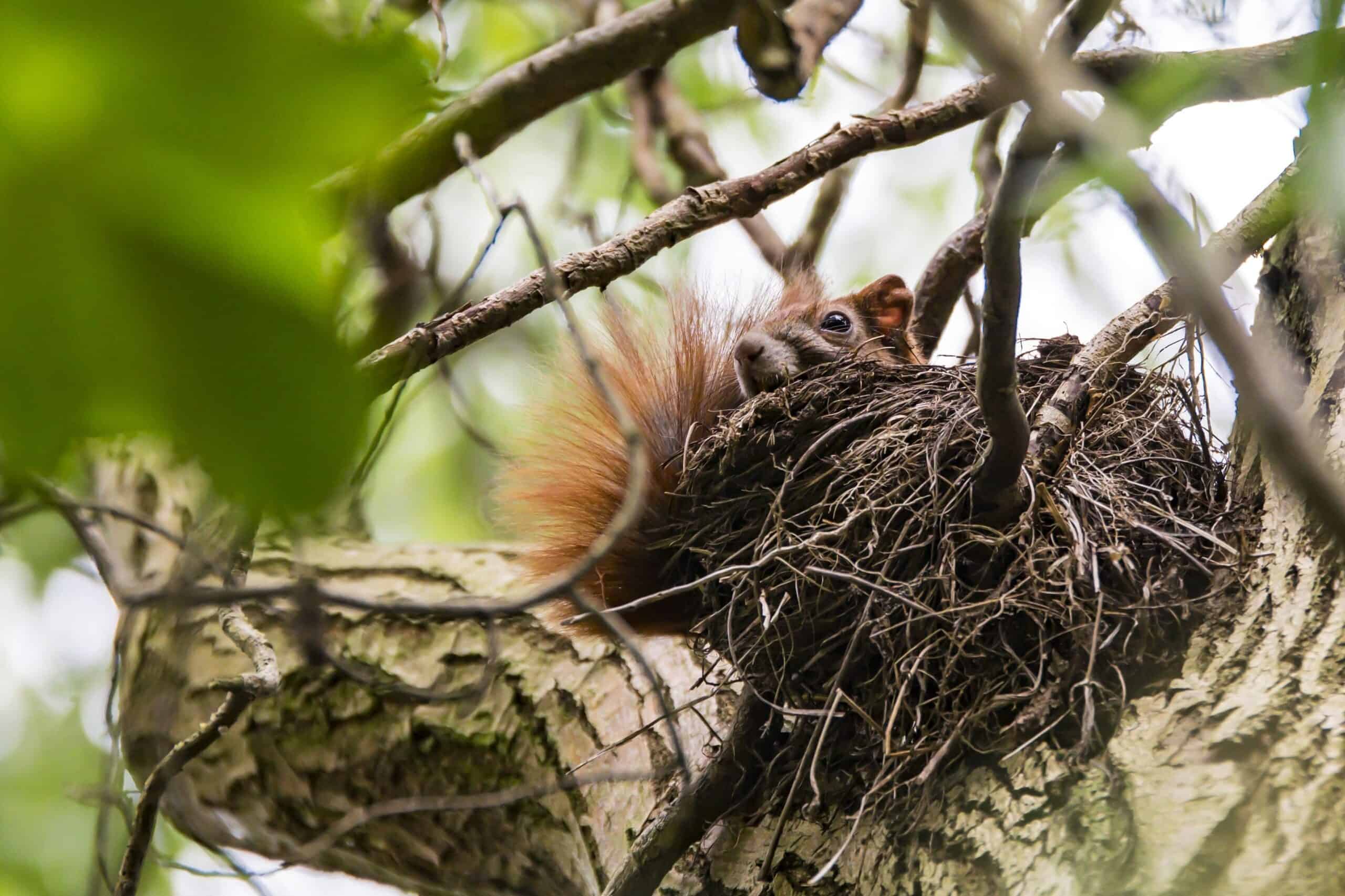
Squirrel dreys have two layers.
The inner cavity of the nest focuses on insulation and comfort. Squirrels use moss, damp leaves, shredded bark, grass, pine needles, fur, feathers, and even cushion fluff to pad this area.
The outer shell must be strong enough to hold up against high winds and rainfall, and squirrels must keep their entry holes small enough to keep out predators like raccoons. Twigs and vines provide structure, while leaves and moss weatherproof the shell.
Squirrels choose sturdy trees to house their dreys, the most common being:
- Elms
- Maples
- Oaks
- Walnuts (the trees, not the nuts)
Squirrels put these high up to prevent predation, but this may make them more susceptible to falling out. It’s not uncommon to see a squirrel nest drop from 30 feet up once high winds kick in.
Dens
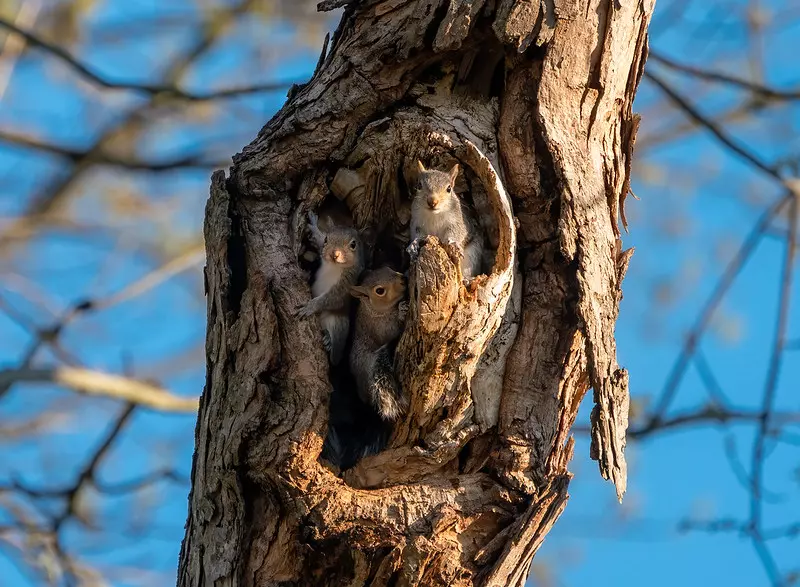
Squirrels opt for tree cavity dens whenever possible for obvious reasons.
They don’t need to worry about the nest falling out of the tree, and can instead use the hollowed tree trunk to provide impeccable shelter from the elements and protection against predators. Squirrel babies have a better chance of making it out of a den alive.
Squirrels usually repurpose nest cavities other animals have abandoned, such as empty woodpecker nests. They focus on increasing comfort and insulating the bottom and sides with moss and twigs, not needing to worry about building that outer skeleton.
Some common tree squirrels that prefer dens include:
- Eastern Gray Squirrels
- Eastern Fox Squirrels
- Red Squirrels
Flying squirrels also prefer dens, and you often find 10 or more piled up in one nest.
Indoor Dens
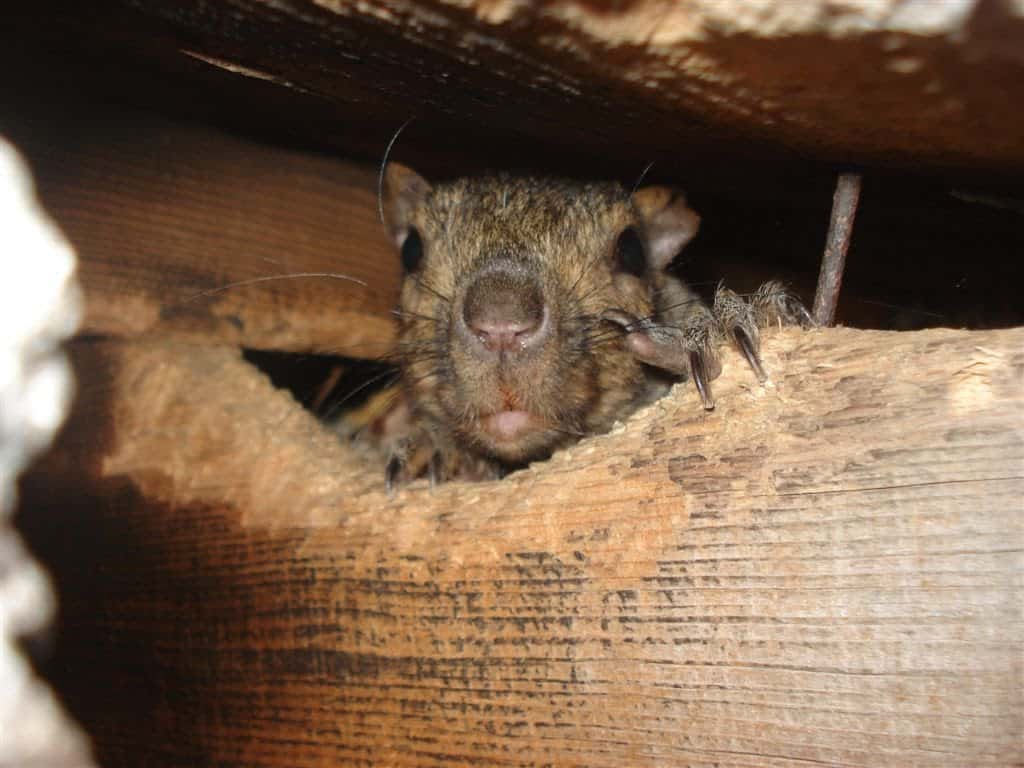
In most situations, squirrels prefer dreys and dens to infiltrate human territory, but they’ll move in if they can’t find a tree nearby.
Indoor dens are usually built in low-traffic areas such as:
- Attics
- Sheds
- Crawl spaces
- Chimneys
- Garages
Squirrels may even build nests inside of your walls if they can’t find a better place. These nests are similar to dens in that they focus on comfort rather than protection.
Burrows
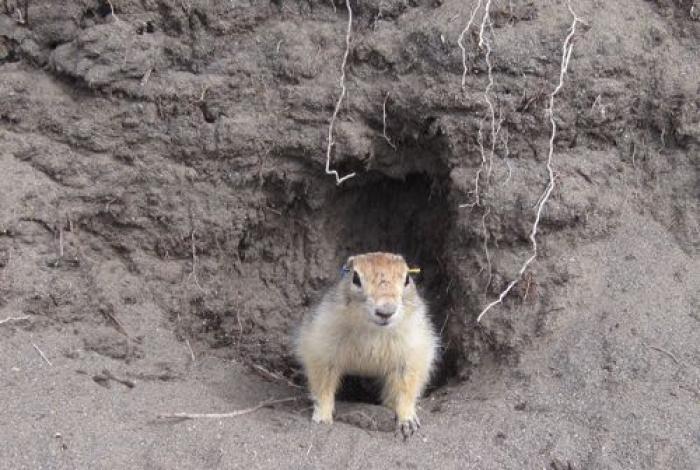
Burrows are far less common, but they’re the primary residence of ground squirrels. The typical burrow system is about 4 inches wide and goes about 6 feet deep. Squirrels can make them as long as necessary, usually between 5 and 30 feet.
Another ground nest squirrels may use is a leaf nest. These are a subterranean option primarily used in summer when squirrels put the nests under tree roots and dead logs. While similar to burrows, leaf nests aren’t nearly as developed.
How Squirrels Build Their Nests
Building a nest can take anywhere from a single day to a few weeks depending on what’s available. A squirrel starts scoping out an area during summer or early fall, right before their first breeding season.
They look for a location that is:
- Safe
- Comfortable
- Close to their food source
If they’re building a drey, the squirrel starts with a skeleton base of twigs and vines to support the rest of the nest. They will then construct the soft inner cavity, finishing with the hard and protective outer shell.
Building dens takes less time and only consists of padding the tree cavity.
Squirrels and Their Many Homes
Most squirrels have at least 2 or 3 nests that they can cycle between, consisting of a main nest for housing the babies and auxiliary nests that offer quick protection while they’re out foraging.
These secondary nests have a more casual construction, but they’re built well enough to warn off predators and keep squirrels safe in storms. They will also store backup food here and drop in for a rest before returning to their main home.
Mother squirrels will relocate their babies if there’s an issue with their main nest, such as a compromised structure or a flea infestation. Babies leave the nests once they’re old enough to live on their own, usually around 2 to 3 months.
Male squirrels usually leave females to their own nest to tend to their young, but they set up in a separate nest nearby.
How to Find a Squirrel Nest
It’s easiest to find squirrel nests when the trees are bare, usually late fall to early spring. Squirrels do not hibernate, but they will spend more time inside during these colder months.
Look for deciduous trees that squirrels prefer, and focus on areas that seem to have a higher squirrel population. You may need binoculars to spot nests that are higher up or built in tree cavities.
Remember that squirrel nests are larger than bird nests, and they’re often spherical. The more surefire way to distinguish a squirrel nest is by observing squirrels in it.
Should You Remove a Squirrel Nest?
You can remove a squirrel nest if they’re giving you problems, but check local laws before doing so. Most U.S. states prohibit removal if the nest has babies in it and no mom because the babies will not survive.
Contact wildlife relocation services in your area for tips if this is the case for you. If you find an empty nest, you can continue with safe removal.
Keep in mind that removing the nest may not deter them from moving in close to your home, and it may actually encourage them to move closer. Make sure you have appropriate alternatives.
Safe Removal Methods
Most squirrel nests are high up in trees, and it’s difficult to reach them without some modified tools.
Before you start poking at the nest, put on long sleeves and a face shield to protect yourself from inevitable falling branches and debris.
Depending on how high the nest is, attach a prong cultivator or garden hoe to an appropriate length of PVC to reach it. Start by gently poking the nest to make sure the adults vacate the nest, then continue to poke at it until the materials come apart and fall to the ground.
Many call in a professional wildlife removal or tree service company to get rid of pesky squirrel nests. They’re best equipped to handle this job, eliminating the risk of damage to you or your home.
Squirrel Nesting Boxes
Squirrels without a safe nesting area are more likely to sneak into your home. Setting up a nesting box is a great way to deter this behavior while keeping them out of your trees.
You want to set up the nesting box at least 10 feet above ground, but squirrels will be happier with boxes set 20 to 30 feet from the ground. Either way, make sure you choose a strong living tree that will not fall.
Orient the entry hole facing East or South to protect the squirrels from heavy winds, and opt for a predator guard to keep cats, snakes, and other predators from violating the space.
You can make your own squirrel house or buy a premade one to install.
Conclusion
Squirrel nests appear similar to bird’s nests with their twiggy outer shell, but they’re much larger and more enclosed. You can find them in strong tree branches or abandoned tree holes, and seeing squirrels in the nest is the most definitive way to recognize them.
You should leave squirrel nests alone if they aren’t bothering you, but you can reach out to local wildlife services if they become a problem. In most cases, you would rather have the nest outside in a tree than in your home.
Are you looking for squirrel nests in your yard? Let us know what you see and we can help you identify it!
